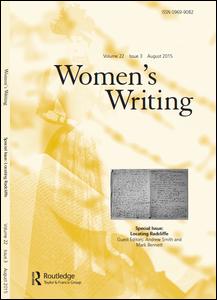
Women's Writing
Volume 12, Issue 1, Mar 2005
Pages 127-141
- DOI: 10.1080/09699080500200244
- Print ISSN: 0969-9082
- Online ISSN: 1747-5848
Narrative time, history, and feminism in mona caird's the daughters of danaus
Abstract
In her article “Marriage” (1888), Mona Caird identified patriarchy as a historically contingent (rather than God-given) institution. Identifying the first societies as matriarchal, she argued that modern marriage began in the Reformation and was linked to commerce, competition, and the bourgeoisie. This article considers how Caird'ss evolutionary views on women and history play out inThe Daughters of Danaus(1894). Set in the late-Victorian period but with a mythological title, Caird'ss novel calls attention to the relation between antiquity and modernity. Moreover, the text experiments radically with confusions and dislocations of narrative time. Part 1 collapses modern and primitive time as Hadria and her siblings dance a reel by moonlight in an ancient Scottish garret. Part 2 opens after an unexplained and unannounced lacuna of about eight years. Part 3 opens with a wholly subjective rendering of time as Hadria sees from her train to Paris the rhythmic passing of telegraph poles marking the “pulses of old Time” from her train to Paris. Finally, the text is marked by intense visual moments when narrative action virtually stops and characters freeze into figures in an extradiegetic visual landscape, as in Valeria'ss first sighting of Hadria or Hadria'ss vision of the woman from the train. These formal dislocations disturb the novel'ss realist discourse and hence imply a corresponding disturbance of the liberal-humanist ideology underlying nineteenth-century realism. The author argues that Caird places her women characters in experimental and often radical relationships with time and history.The Daughters of Danausthe author suggests, conveys an impressionistic and subjective view of time, critiquing the standardisation or rationalisation of time (commonly known as the phenomenon of “railway time”) and suggesting the historically contingent nature of patriarchy.